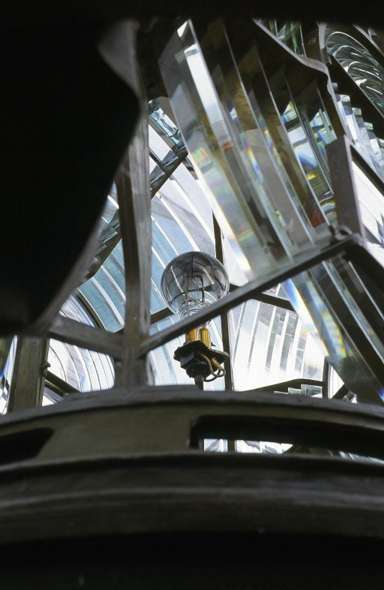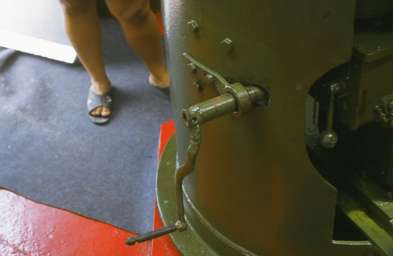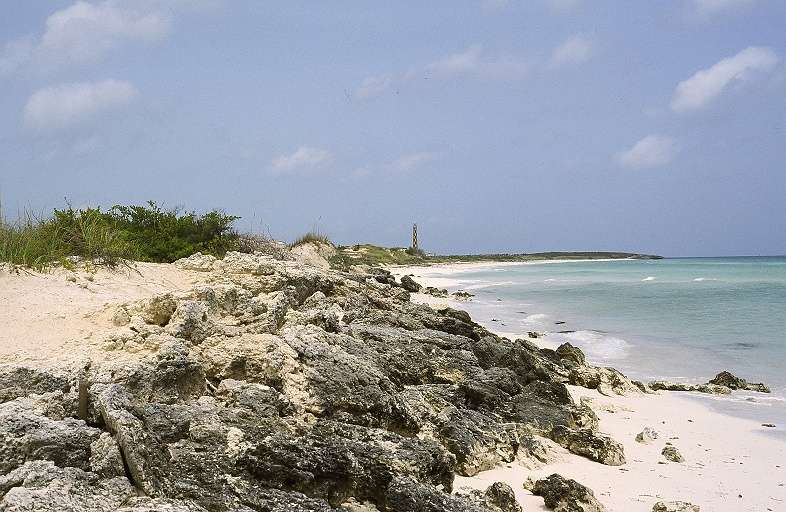A closeup look at the tower reveals that it is not octagonal, as it appears at a distance: it is 16-sided, or hexadecagonal, in the technical term. (The only 16-sided U.S. lighthouses are the short towers at Cape Mendocino and Point Reyes, California.) The gallery, watch room, and lantern room continue the 16-sided design to the top of the structure. Originally the lighthouse had four windows on each level to allow the maximum possible air within the metal tower. These windows have been sealed, making the interior of the tower almost unbearably hot in the tropical sun.
The lighthouse keeper's wife gave Tom a guided tour of the 131-foot tower. From the gallery, about 110 feet up, the view eastward shows the isolated situation of the lighthouse and the largely deserted coastline, with the waters of the Old Bahama Channel in the distance.



The light from the lighthouse comes from a single bulb, so the keepers must stand ready to replace the bulb whenever it might burn out during the night. Automated U.S. lighthouses have an wheel of bulbs, so that when the active one burns out the next will rotate into place and light immediately. The lens of the lighthouse appears to have four prismatic panels, each with a bullseye to create the flash effect. Since the characteristic of the light is a white flash every 15 seconds, the lens must rotate once every minute. Although electricity powers the light, the rotation comes from clockwork, just as it did when the lighthouse was built in 1859. The weights travel down the full height of the tower, presumably, but when they reach the bottom the keeper must raise them with a hand crank.

The base of the cast iron tower is raised off the ground on a pyramidal masonry base having the same 16-sided design as the rest of the lighthouse. The base is apparently solid, so access to the tower is provided by a steep stairway. Maintaining the lighthouse is no easy task today, but it's easy to imagine how much more difficult it was when large cans of kerosene had to be carried up these stairs and then all the way up the tower to the light.
Faro Paredón stands today in splendid isolation on an unspoiled coastline. But the forces of development reach everywhere, and there are reports the Cuban government is considering establishing a resort somewhere in the area. The area is famous for its wildlife, especially birds, so we can only hope any development will take these natural values into account.

